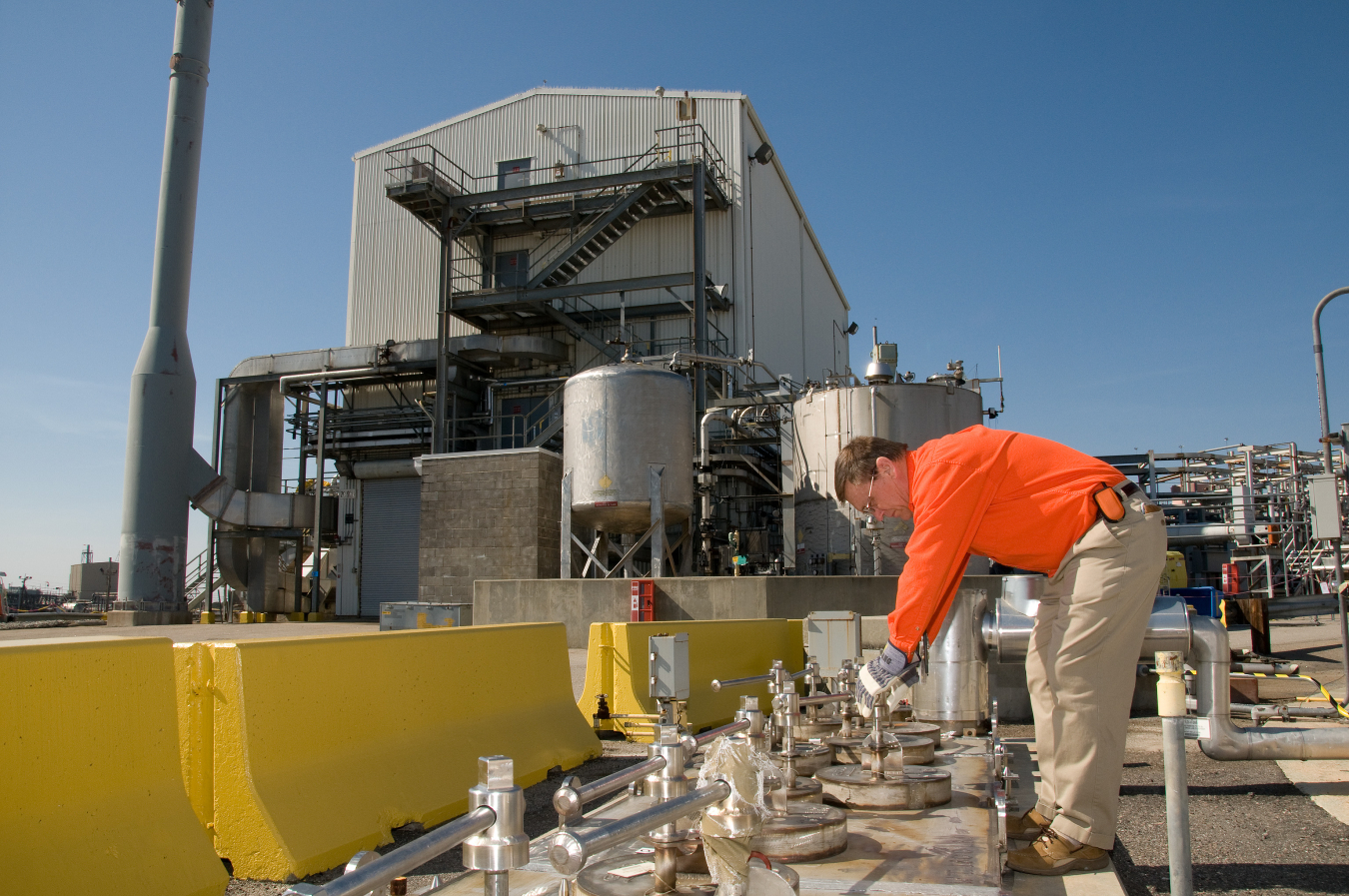AIKEN, S.C. (April 3, 2019) – For the first time in the history of the Savannah River Site (SRS), two salt waste streams are being processing at ...
April 3, 2019AIKEN, S.C. (April 3, 2019) – For the first time in the history of the Savannah River Site (SRS), two salt waste streams are being processing at the site.
The waste is being processed through two salt-decontamination operations: an integrated interim salt processing operation called the Actinide Removal Process and the Modular Caustic Side Solvent Extraction Unit (ARP/MCU), and a newly implemented process called Tank Closure Cesium Removal (TCCR). SRS liquid waste contractor Savannah River Remediation (SRR) operates both ARP/MCU and TCCR.
With help from the parallel processing streams, now more than 10 million gallons of salt waste have been processed since salt-decontamination operations began at SRS.
The progression of salt processing technology has played a significant role in achieving the 10-milliongallon milestone, said Jim Folk, DOE-SR assistant manager for waste disposition.
“The Savannah River Site liquid waste project has continuously innovated, improved, and refined its salt waste processing capabilities over the last decade,” Folk said. “DOE will take advantage of improved technology and lessons learned as we move into the next era of salt processing at the site.” Salt-decontamination operations are designed to remove nearly all of the cesium from the salt waste stored in underground tanks before the waste stream is sent to the Saltstone Production Facility (SPF). At SPF, the salt waste is mixed with a cement-like grout to form saltstone, which is permanently stored in above-ground saltstone disposal units. Salt waste accounts for more than 90 percent of the tank waste at the site.
Salt-decontamination operations are designed to remove nearly all of the cesium from the salt waste stored in underground tanks before the waste stream is sent to the Saltstone Production Facility (SPF). At SPF, the salt waste is mixed with a cement-like grout to form saltstone, which is permanently stored in above-ground saltstone disposal units.
Salt waste accounts for more than 90 percent of the tank waste at the site.
Salt processing at SRS began in 2007 with a project called deliquification, dissolution, and adjustment. This technology involved removing liquid from the tank waste, dissolving the tank’s saltcake material, and adding the dissolved solution to other tank farm waste to adjust the material’s chemistry for processing at SPF. Approximately 2.8 million gallons of waste was processed using this method.
The ARP/MCU process was implemented in 2008. ARP/MCU uses solvents and filters to remove the radioactive isotopes and is a pilot project for the future Salt Waste Processing Facility. More than 7.1 million gallons have been processed through ARP/MCU since its startup.
The newest salt-decontamination project, TCCR, began operating in January 2019. The process uses filters, ion exchange columns, and a specially engineered resin to remove cesium from Tank 10. More than 150,000 gallons of waste have been processed so far.

A Savannah River Remediation employee works outside the Actinide Removal Process in H Tank Farm.
Salt processing at SRS began in 2007 with a project called deliquification, dissolution, and adjustment. This technology involved removing liquid from the tank waste, dissolving the tank’s saltcake material, and adding the dissolved solution to other tank farm waste to adjust the material’s chemistry for processing at SPF. Approximately 2.8 million gallons of waste was processed using this method.
The ARP/MCU process was implemented in 2008. ARP/MCU uses solvents and filters to remove the radioactive isotopes and is a pilot project for the future Salt Waste Processing Facility. More than 7.1 million gallons have been processed through ARP/MCU since its startup.
The newest salt-decontamination project, TCCR, began operating in January 2019. The process uses filters, ion exchange columns, and a specially engineered resin to remove cesium from Tank 10. More than 150,000 gallons of waste have been processed so far.

